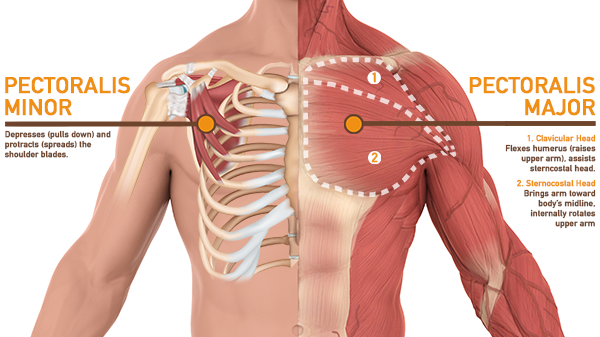The pectoral region is located on the anterior chest wall. It contains four muscles that exert a force on the upper limb: the pectoralis major, pectoralis minor, serratus anterior and subclavius.
Pectoralis Major
The pectoralis major is the most superficial muscle in the pectoral region. It is large and fan shaped, and is composed of a sternal head and a clavicular head:
Attachments:
Clavicular head – originates from the anterior surface of the medial clavicle.
Sternocostal head – originates from the anterior surface of the sternum, the superior six costal cartilages and the aponeurosis of the external oblique muscle.
The distal attachment of both heads is onto the intertubercular sulcus of the humerus.
Function: Adducts and medially rotates the upper limb and draws the scapula anteroinferiorly. The clavicular head also acts individually to flex the upper limb.
Innervation: Lateral and medial pectoral nerves.
Pectoralis Minor
The pectoralis minor lies underneath its larger counterpart muscle, pectoralis major. Both muscles form part of the anterior wall of the axilla region.
Attachments: Originates from the 3rd-5th ribs and inserts into the coracoid process of the scapula.
Function: Stabilizes the scapula by drawing it anteroinferiorly against the thoracic wall.
Innervation: Medial pectoral nerve.
Forceful activities that can cause a pectoralis major tear include:
- Football
- Wrestling
- Rugby
- Skiing
- Hockey
- Parachuting
- Martial arts
- Gymnastics






